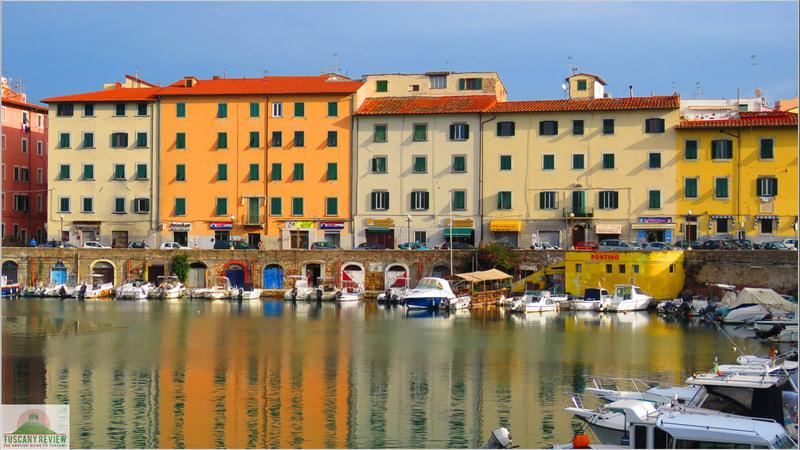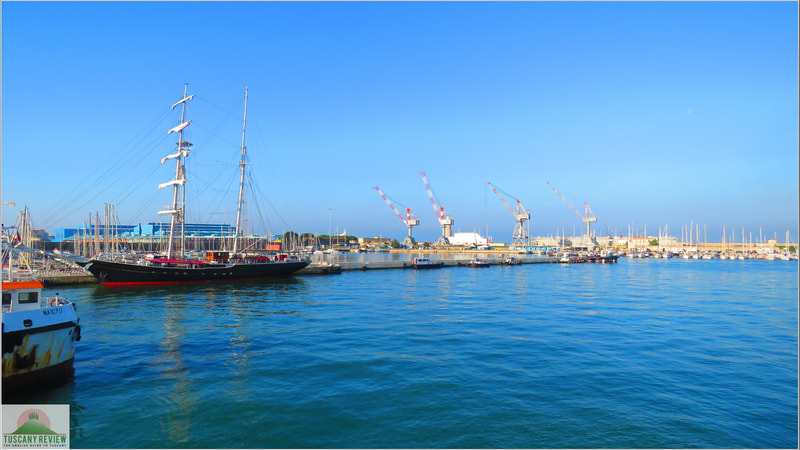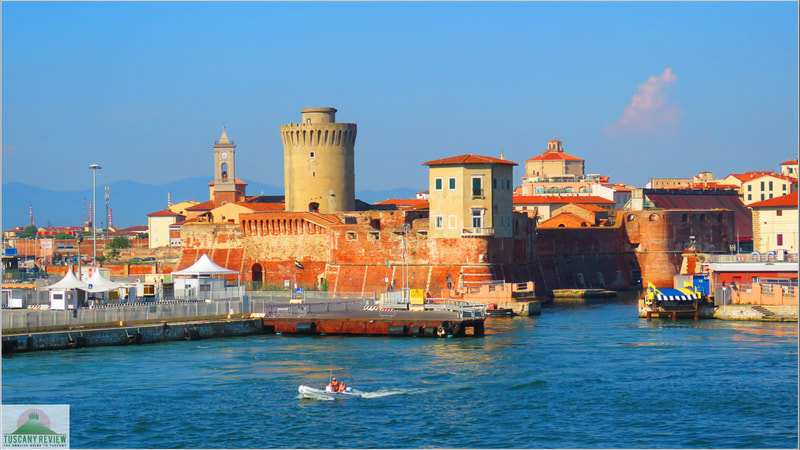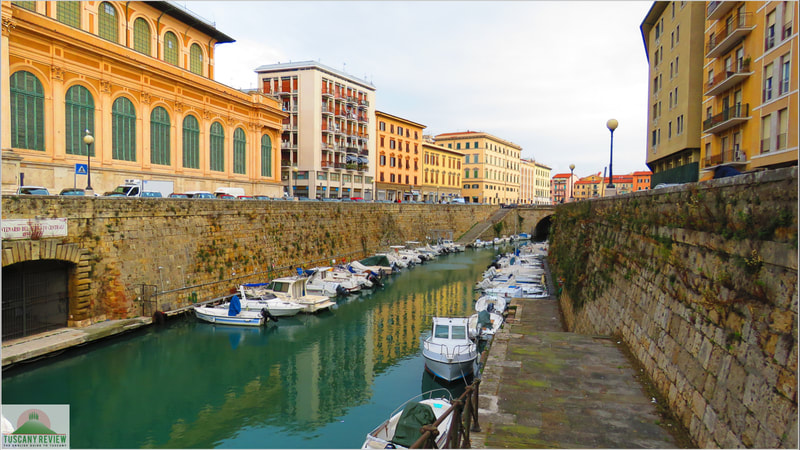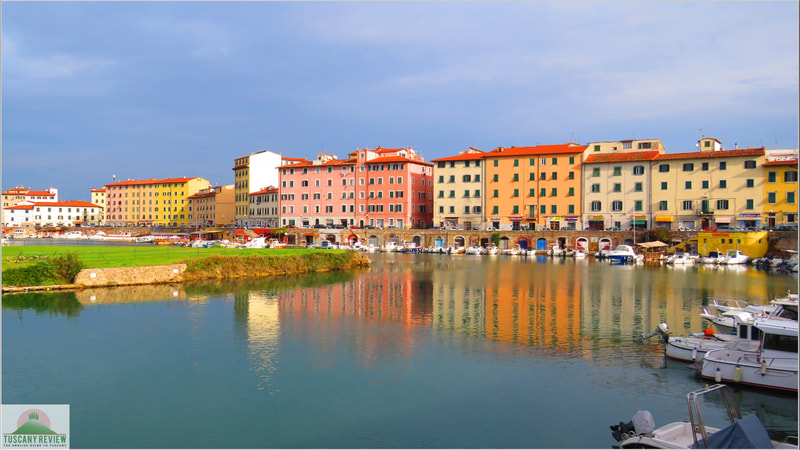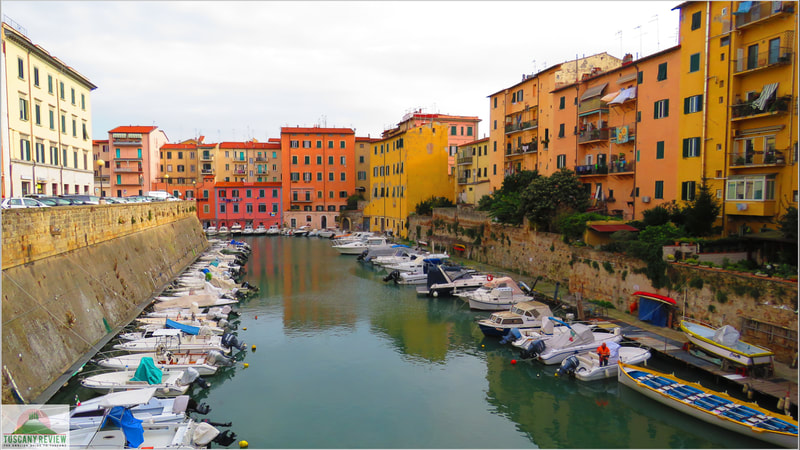Livorno
|
By Dion Protani
|
Latest update: 30 December 2023
|
|
The city of Livorno is the capital city of the Province of Livorno with a population of 157,783 inhabitants.
Situated on the Ligurian Sea, it covers a total area of 105 km² and lies 90 kilometres south west of Florence, the regional capital of Tuscany. Livorno is best-known as a sea port, the second largest in Italy after Genoa. Most tourists that pass through here are on their way somewhere else by ferry but the city itself also its own charms. |
Related links
Leghorn or Livorno?
A limited number of cities in Italy have an English version of their name such as Rome instead of Roma or Venice instead of Venezia and so on; despite being some way down on the usual lists of places to visit in Italy, Livorno is just such a place that has an anglicised name but just how many people use that name, "Leghorn", is open to debate.
For what it's worth, Leghorn is said to derive from the Genoese who used to call the city Ligorno in their dialect. Just why it ended up as Leghorn in English is questionable but let's just stick to the Italian version of Livorno anyway, it's sounds nicer and certainly less weird!
A limited number of cities in Italy have an English version of their name such as Rome instead of Roma or Venice instead of Venezia and so on; despite being some way down on the usual lists of places to visit in Italy, Livorno is just such a place that has an anglicised name but just how many people use that name, "Leghorn", is open to debate.
For what it's worth, Leghorn is said to derive from the Genoese who used to call the city Ligorno in their dialect. Just why it ended up as Leghorn in English is questionable but let's just stick to the Italian version of Livorno anyway, it's sounds nicer and certainly less weird!
Livorno's origins and later development by the Medici
There are traces of a settlement in Livorno as far back as the Neolithic era and further evidence of life from the Etruscans and from the Romans. Throughout the middle ages Livorno remained a relatively insignificant port town with a small population but that all started to change with the arrival of the Medici family in the Renaissance period.
They commissioned a new port and fortress (now known as the Fortezza Nuova - the New Fort) in the shape of a pentagon, breathing life into the sleepy town. Further political and economic developments stimulated further growth; a combination of trade incentives for shipping and relaxed laws for minor ethnic groups, saw Livorno flourish before being granted city status in 1606.
There are traces of a settlement in Livorno as far back as the Neolithic era and further evidence of life from the Etruscans and from the Romans. Throughout the middle ages Livorno remained a relatively insignificant port town with a small population but that all started to change with the arrival of the Medici family in the Renaissance period.
They commissioned a new port and fortress (now known as the Fortezza Nuova - the New Fort) in the shape of a pentagon, breathing life into the sleepy town. Further political and economic developments stimulated further growth; a combination of trade incentives for shipping and relaxed laws for minor ethnic groups, saw Livorno flourish before being granted city status in 1606.
Sightseeing Livorno
Allied bombing raids during World War Two destroyed much of Livorno's historic architectural legacy and the modern style of the areas that were rebuilt lacked some of the previous grandeur. There are however, still many places of interest in the city, not least the area known as Piccola Venezia (Little Venice).
The name leaves little to the imagination; a series of canals built using the same methods by which Venice itself was built. Water surrounds the Fortezza Nuova which can be seen from the large square: Piazza della Repubblica and If you cross to the opposite side of the Piazza, you can enjoy a pleasant quayside walk along another canal that leads all the way down to the main port area called the Porto Mediceo.
Allied bombing raids during World War Two destroyed much of Livorno's historic architectural legacy and the modern style of the areas that were rebuilt lacked some of the previous grandeur. There are however, still many places of interest in the city, not least the area known as Piccola Venezia (Little Venice).
The name leaves little to the imagination; a series of canals built using the same methods by which Venice itself was built. Water surrounds the Fortezza Nuova which can be seen from the large square: Piazza della Repubblica and If you cross to the opposite side of the Piazza, you can enjoy a pleasant quayside walk along another canal that leads all the way down to the main port area called the Porto Mediceo.
South of the Porto Mediceo
Another pleasant area to walk is south of the Porto Mediceo; this tree-lined passageway is a popular spot for the evening passeggiata and continues down as far as the Terrazza Mascagni with its distinctive chessboard pavement. You'll also find the Livorno Aquarium here along with a private beach area and a marina.
Another pleasant area to walk is south of the Porto Mediceo; this tree-lined passageway is a popular spot for the evening passeggiata and continues down as far as the Terrazza Mascagni with its distinctive chessboard pavement. You'll also find the Livorno Aquarium here along with a private beach area and a marina.
The Port of Livorno
It is though, the port to which most visitors to Livorno gravitate towards; from here you can sail across to the Spanish city of Barcelona, to Tangier in Morocco on the African mainland, to Corsica, Sardinia or to the island of Capraia in the Tuscan Archipelago.
Famous monuments in and around the port area include the Monumento dei Quattro Mori (Monument of the Four Moors), a beautiful statue whose significance is often the source of controversy and debate, while as you leave or enter Livorno's port you'll most likely pass the Fortezza Vecchia (Old Fort) with its imposing tower and fortifications.
It is though, the port to which most visitors to Livorno gravitate towards; from here you can sail across to the Spanish city of Barcelona, to Tangier in Morocco on the African mainland, to Corsica, Sardinia or to the island of Capraia in the Tuscan Archipelago.
Famous monuments in and around the port area include the Monumento dei Quattro Mori (Monument of the Four Moors), a beautiful statue whose significance is often the source of controversy and debate, while as you leave or enter Livorno's port you'll most likely pass the Fortezza Vecchia (Old Fort) with its imposing tower and fortifications.
Livorno's Culinary Delights
With its proximity to the sea, Livorno has developed into something of a centre of culinary excellence. Dozens of restaurants line the port areas with the speciality dish called "Cacciucco", a type of seafood stew, readily available. Head inland from the port, beyond the main square, Piazza Grande, and you'll find a wider variety of cuisine available along with a large number of shops of all kinds. Piazza Grande is also home to the city's most important religious building: Livorno Cathedral.
With its proximity to the sea, Livorno has developed into something of a centre of culinary excellence. Dozens of restaurants line the port areas with the speciality dish called "Cacciucco", a type of seafood stew, readily available. Head inland from the port, beyond the main square, Piazza Grande, and you'll find a wider variety of cuisine available along with a large number of shops of all kinds. Piazza Grande is also home to the city's most important religious building: Livorno Cathedral.
Close to Livorno
Places to visit close to Livorno include the beaches of the Calafuria Nature Reserve just south of the city, with the beach resort of Castiglioncello further down the coast. The close proximity of Pisa is an obvious temptation while less obvious but equally fulfilling is the fascinating city of Lucca which lies just beyond Pisa.
Places to visit close to Livorno include the beaches of the Calafuria Nature Reserve just south of the city, with the beach resort of Castiglioncello further down the coast. The close proximity of Pisa is an obvious temptation while less obvious but equally fulfilling is the fascinating city of Lucca which lies just beyond Pisa.
Comune di Livorno
|
Province: Livorno
Region: Tuscany Population: 154,483 (source: ISTAT 1 January 2023) Total size: 105 km² Top sights: Little Venice canals, Fortezza Nuova Close by: Calafuria Nature Reserve, Castiglioncello, Pisa, Lucca Recommended hotel: Agave in Città |
Livorno Travel
Livorno's train station is located at the eastern edge of the city, a 30 minute walk (2.4 km) from Piazza Grande in the centre. To avoid the fairly long walk you can make the same journey with the number 1 and 2 buses which take around 10 minutes. You can reach the centre of Florence (Santa Maria Novella) in an hour and 20 minutes without having to change. Heading north, you can take a train from Livorno all the way to Turin (4 hours), stopping along the way in Pisa (15 minutes), Viareggio (31 mins) and Massa (44 mins). Trains also run south from Livorno, mostly along the coast and all the way down to Rome (2 hours 41 minutes) with stops at Grosseto (1 hour 2 minutes) and the town of Civitavecchia, the main port in the Lazio region, (1 hour 54 minutes).
The most convenient airport for Livorno is Pisa Airport which is a 23 minute drive away (25 km), while Tuscany's other major airport, Florence Airport, is the next best option at an hour and 6 minutes away (90 km).
The most convenient airport for Livorno is Pisa Airport which is a 23 minute drive away (25 km), while Tuscany's other major airport, Florence Airport, is the next best option at an hour and 6 minutes away (90 km).
|
By car: Pisa - 29 mins (26 km), Lucca - 44 mins (51 km)
Fly to: Pisa Airport - 23 minutes by car (25 km) |

